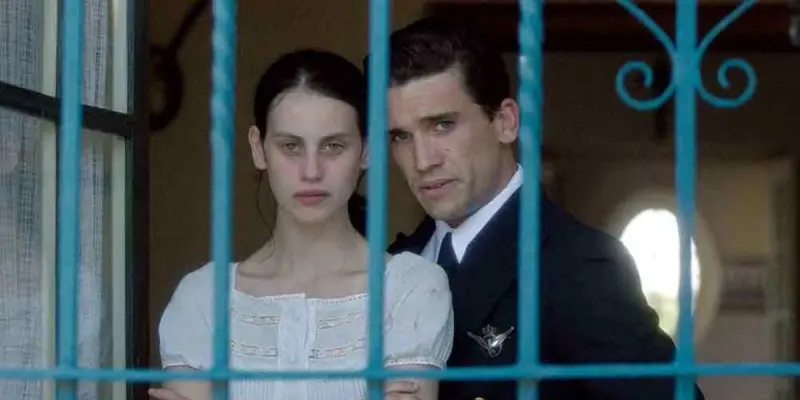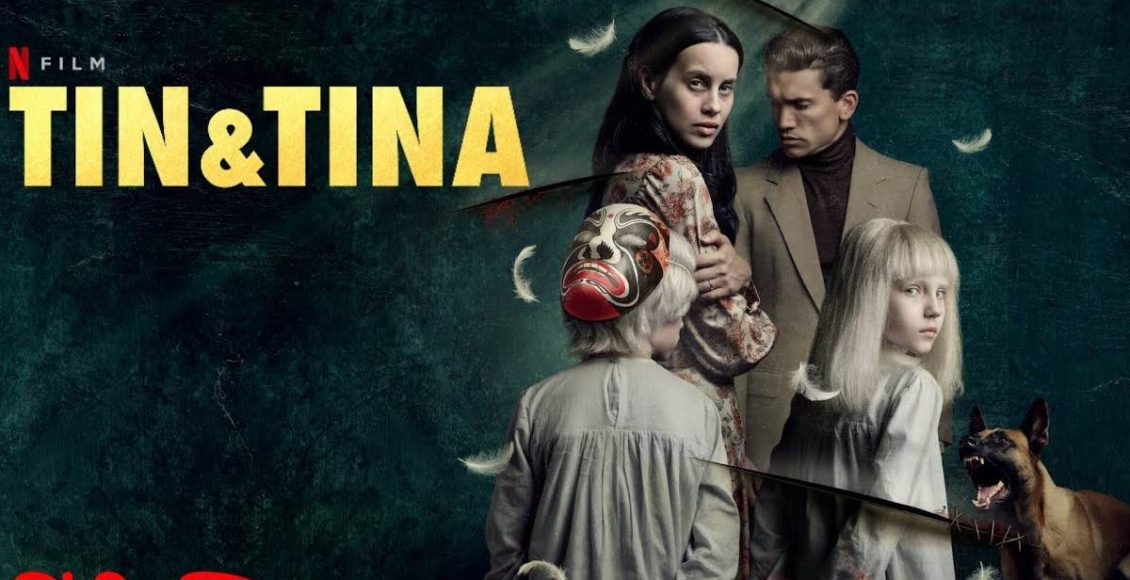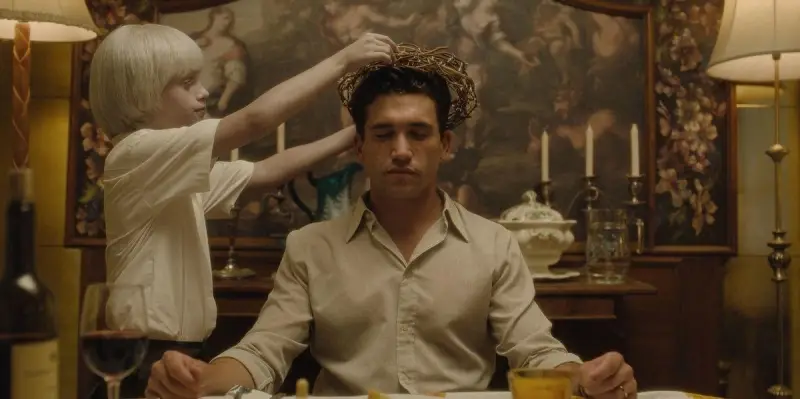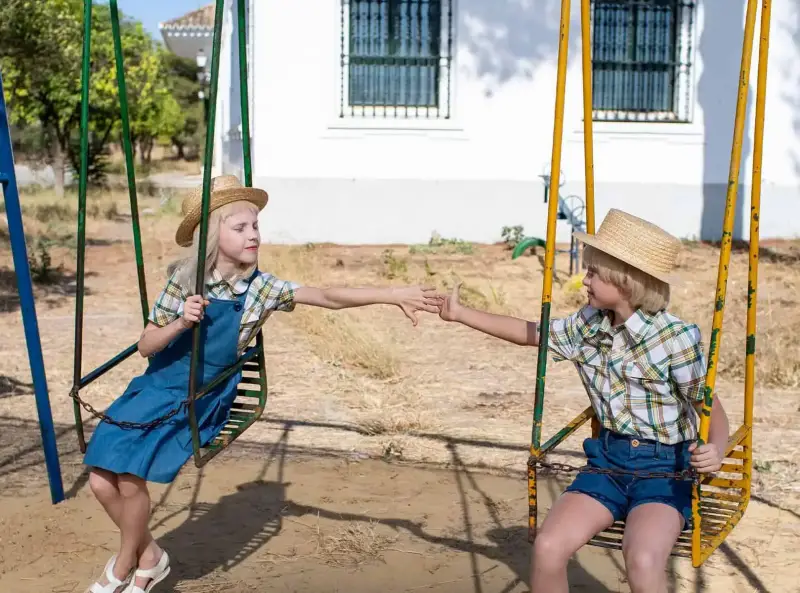[Tin & Tina Review] Thriller movie about possessed religious children with pure souls (no spoilers).
Tin & Tina
Summary
Overall, the movie can be considered successful in portraying the innocence of children led astray by misguided religious adults. The film shows the adorable nature of the children juxtaposed with thriller scenes, although it doesn’t explicitly depict horrifying scenes. The movie consistently explores the theme of children’s innocence throughout, leading up to an open-ended final scene that leaves viewers puzzled about its interpretation. The film may not be highly entertaining, but it leaves room for various thoughts and interpretations in the viewers’ minds.
Overall
6.5/10User Review
( votes)Pros
- The movie evokes a sense of horror from the pure and innocent nature of the children manipulated by religious zealots.
- The child actors deliver exceptional performances.
Cons
- The movie doesn’t show explicit or intense horrifying scenes.
- The story unfolds at a slow pace.
- The open-ended ending leaves viewers puzzled.
ADBRO
Tin & Tina The Netflix film from Spain tells the story of Lola and Adolfo, a newlywed couple who are unable to conceive a child. They make the decision to adopt Tin and Tina, two adorable siblings from a strict religious orphanage run by nuns. This leads the two children to develop an excessive devotion to God, eventually guiding them towards their new family’s destiny.

Tin & Tina Review (No Spoilers)
This is a thriller film from Spain, created based on a short film by director Rubin Stein himself. It marks his directorial debut. The plot revolves around the concept of adopting a child, but it turns out to be a demonic child. While similar stories often, this film takes a different approach. It focuses on an innocent child who has been taught to believe in God excessively, interpreting the Bible literally and blurring the lines between fiction and reality. This misguided faith leads to horrifying events, driven by good intentions but resulting in disastrous outcomes. The film presents multiple unsettling incidents, escalating in a manner similar to films involving demonic children, except in this case, the children are pure and innocent in a twisted way.
 Due to the use of children as representatives of evil, the film has toned down the violence, with the camera angles carefully avoiding explicit scenes, such as those involving animal cruelty. The intention is to not directly show the children harming animals or depict the more sinister aspects of their actions. This approach is partly because the story focuses on the idea that it is the child’s misguidedness rather than intentional malevolence, unlike typical films involving demonic children. This aspect is also linked to the final Long Take scene over 15 minutes. The ending scene leaves the viewers questioning whether the two children are truly evil or if it was all just a coincidental occurrence. It is an open-ended conclusion that hints at two possible interpretations, leaving it up to the viewers to decide which one to believe.
Due to the use of children as representatives of evil, the film has toned down the violence, with the camera angles carefully avoiding explicit scenes, such as those involving animal cruelty. The intention is to not directly show the children harming animals or depict the more sinister aspects of their actions. This approach is partly because the story focuses on the idea that it is the child’s misguidedness rather than intentional malevolence, unlike typical films involving demonic children. This aspect is also linked to the final Long Take scene over 15 minutes. The ending scene leaves the viewers questioning whether the two children are truly evil or if it was all just a coincidental occurrence. It is an open-ended conclusion that hints at two possible interpretations, leaving it up to the viewers to decide which one to believe.
The film doesn’t solely focus on the children’s actions, but it also highlights the inner turmoil of Lola (played by Milena Smit)), who feels inadequate as a mother and believes she is not good at taking care of children. Her husband is often away from home due to his job as a pilot, and her inability to conceive another child has taken a toll on her mental state. Lola herself is not a religious person, but the children firmly believe in God and try to instill that belief in her. Miraculous events occur that challenge Lola’s disbelief in God, shaking her convictions. However, the film doesn’t delve into supernatural territory; the events that unfold can be explained to some extent.
The highlight of this film is the adorable child actors (played by Anastasia Russo and Carlos González Morollón ), who are not actual blonde-haired children as depicted in the film. Their physical appearance resembles that of angelic beings from God. The film intentionally portrays the children in this manner as representatives of such divine figures. Apart from the disturbing events that occur, the rest of their actions are portrayed in an endearing manner, similar to ordinary children at play. This aspect leaves viewers hesitant to believe that the children are truly evil, just as Lola and Adolfo believe.
Overall, the movie can be considered successful in portraying the innocence of children led astray by misguided religious adults. The film shows the adorable nature of the children juxtaposed with thriller scenes, although it doesn’t explicitly depict horrifying scenes. The movie consistently explores the theme of children’s innocence throughout, leading up to an open-ended final scene that leaves viewers puzzled about its interpretation. The film may not be highly entertaining, but it leaves room for various thoughts and interpretations in the viewers’ minds.



